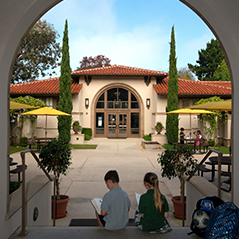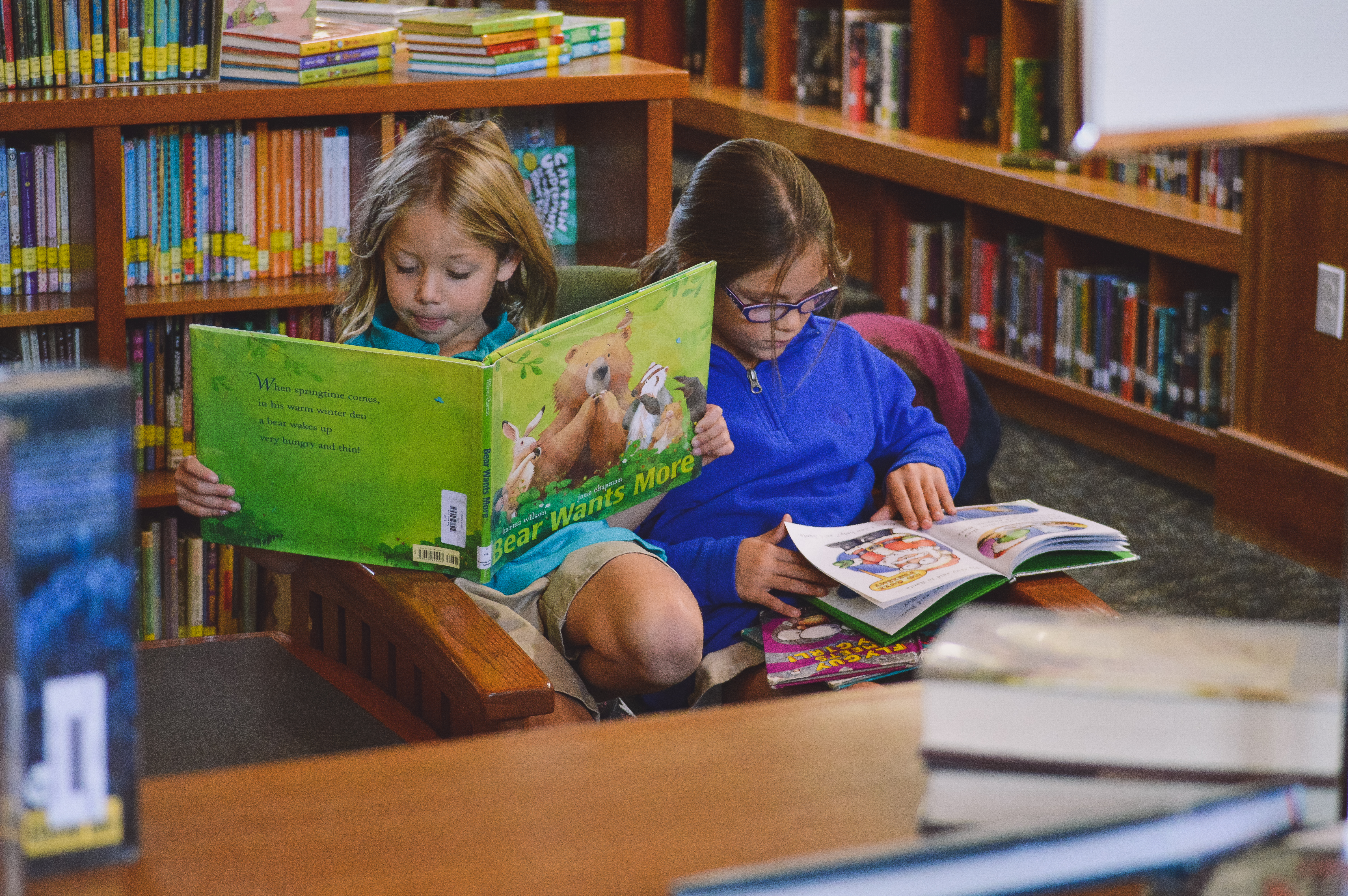



Libraries are magical places. There are few people who can walk down the aisle of a library and not be captivated by the colorful spines of the books on the shelves or wonder about the adventures contained between their covers. In those books, readers discover their passions, find role models, and make emotional connections with the stories of people around the world and throughout time. The Considine Library at Parker’s Lower School is one of those magical places.
The list of momentous “firsts” that happen at the Lower School library is long. Students may check out their first book, meet their first librarian, fall in love with a story for the first time, take initial steps toward researching project topics, and make their first discoveries about who they are as readers.
The student experience at the Lower School library is the result of many years of developing, adjusting, and reinforcing a well-established library curriculum. For nearly 26 years, Laurie Brae, Lower School librarian, has been doing just that. The learning outcomes of Parker’s library curriculum include developing the ability to locate information; learning how to select, evaluate, and use information from a variety of sources both critically and competently; and understanding how to use information and technology ethically and responsibly. Another top priority: encouraging a love for reading.
The library’s learning outcomes sound comprehensive and well-planned—and they are. But the Lower School students, by their nature, call forth the unscripted, enchanting aspects of library time. They describe it simply as fun.
For the youngest students, library lessons start with the basics. Laurie guides them on how to be a good listener during story time, how to navigate the library space responsibly, and, when they are ready, how to check out books to take home. Hidden in these formative lessons are the underlying themes of community, self-management, responsibility, and respect for their classmates, teacher, and the books themselves.
It really doesn’t matter how old you are; everyone loves to hear a good story.
Laurie holds story time sessions with students from Junior Kindergarten through Grade 5. Even the oldest of those students benefit from exposure to great books. “It really doesn’t matter how old you are; everyone loves to hear a good story,” Laurie says. Among her main goals is to develop self-awareness in her students, in terms of what kinds of stories they like to read and how they like to read them. In her arsenal is a proven tool to help Lower Schoolers with the sometimes frustrating task of choosing the right book.
The tool is captured in an acronym: CAN IT BE FOR ME? It stands for: Cover, Author, Number of pages, Illustrator, Title, Blurb, Excerpt, First page, Opinions of others, Reverse title page, My friends, Enjoy genre. Laurie found out about this method at a conference for librarians and brought it back to Parker. As students explore these 12 criteria and form their own opinions about each of the characteristics of a book, she explains, they will be better able to decide if the book is something they will find interesting and enjoyable.

Having a diverse collection of books helps. Laurie works closely with Christen Tedrow-Harrison, Parker’s director of diversity and inclusion, to understand how a diverse student population forges connections with books. Using the concept of “windows and mirrors,” Laurie can curate a collection that allows students to see themselves in certain books and to see into the lives of people from all walks of life in others. This is an essential part of Parker’s strategic goal to ensure that diversity, inclusivity, and cultural competency are integrated into the classroom culture, teaching practices, and content.
Following one’s heart to a favorite book might be the most wonder-filled aspect of immersing oneself in the library, but Laurie makes sure that students grasp its raw academic utility, too. As students reach the middle grades and make their first forays into research projects, Laurie has the opportunity to teach them the differences between fiction and nonfiction books. She also works closely with the classroom teachers to ensure that whatever students intend to seek, they will find.
Many students gain a command of the library as a research site as part of their Lower School design class. The design teachers explain that all great designs are grounded in research—and that’s why many projects start in the library. Whether students are learning about how birds’ beaks are designed by nature for eating, or researching products to inform their own inventions for the Grade 4 business sale project, the library fuels their work. Laurie’s work with “design thinking” helps students to formulate questions, brainstorm ideas, and practice collaborating with their classmates.
One of Laurie’s core beliefs is that “no matter why students visit the library, they always find something wonderful.” This speaks to the magic of the Considine Library. It provides an experience that students enjoy so much, they almost forget they are learning—and that is as magical as it gets.
This article first appeared in the fall 2018 issue of Parker Magazine. Click here to read the issue.




